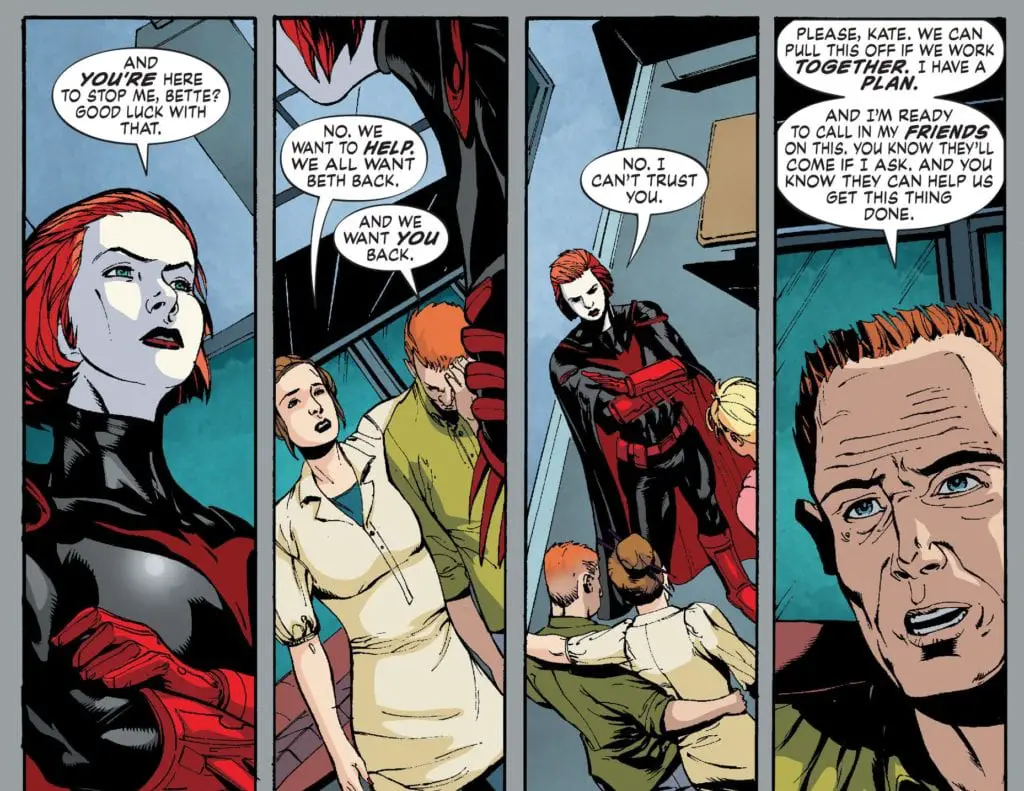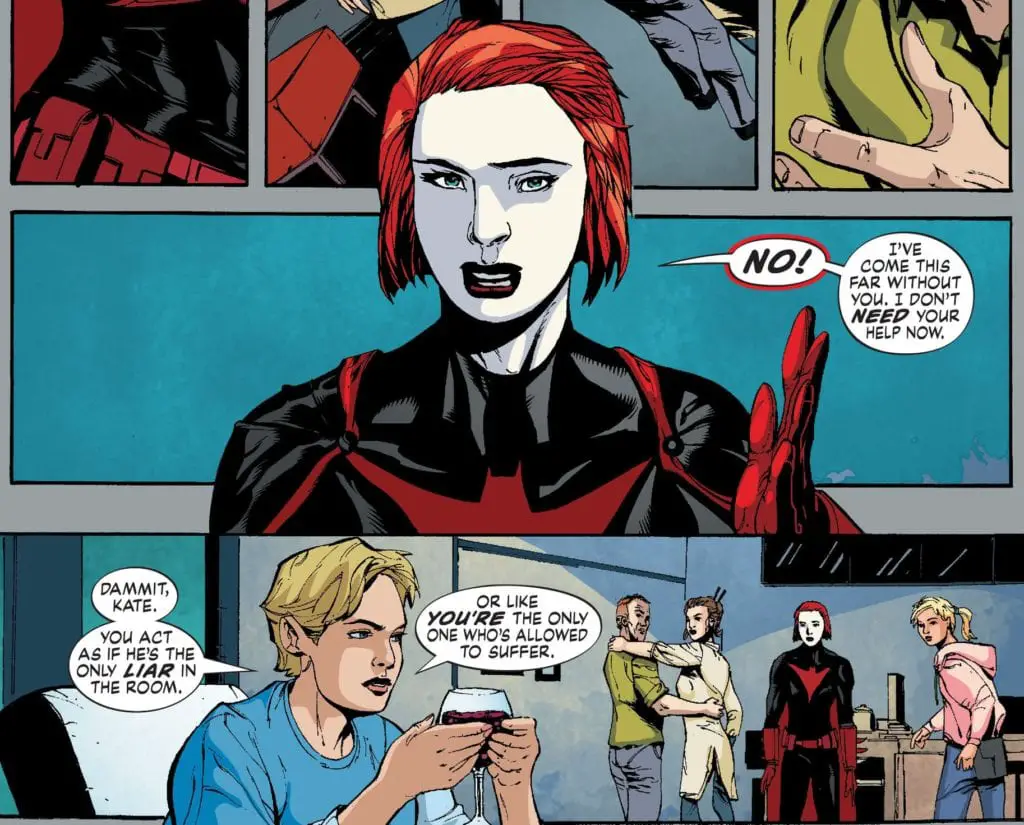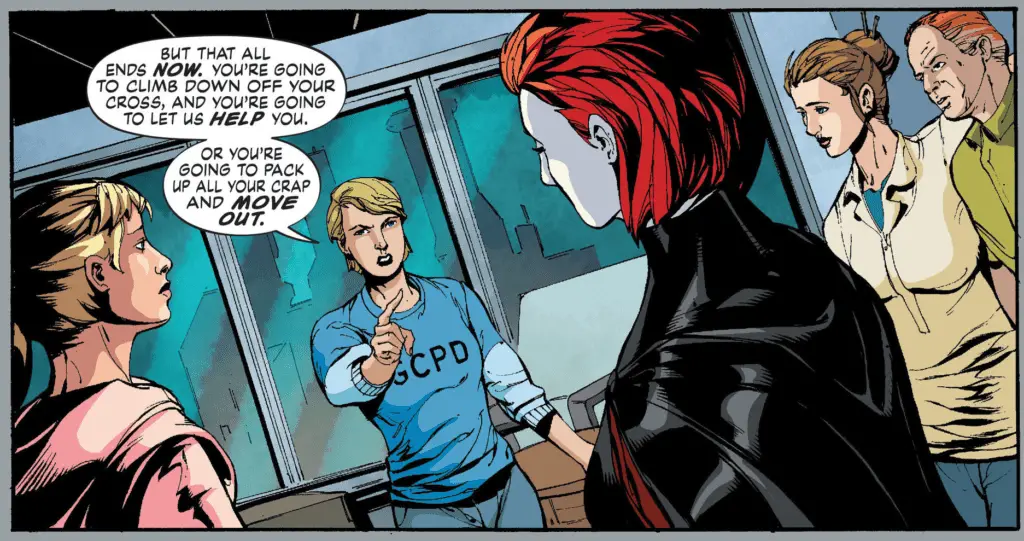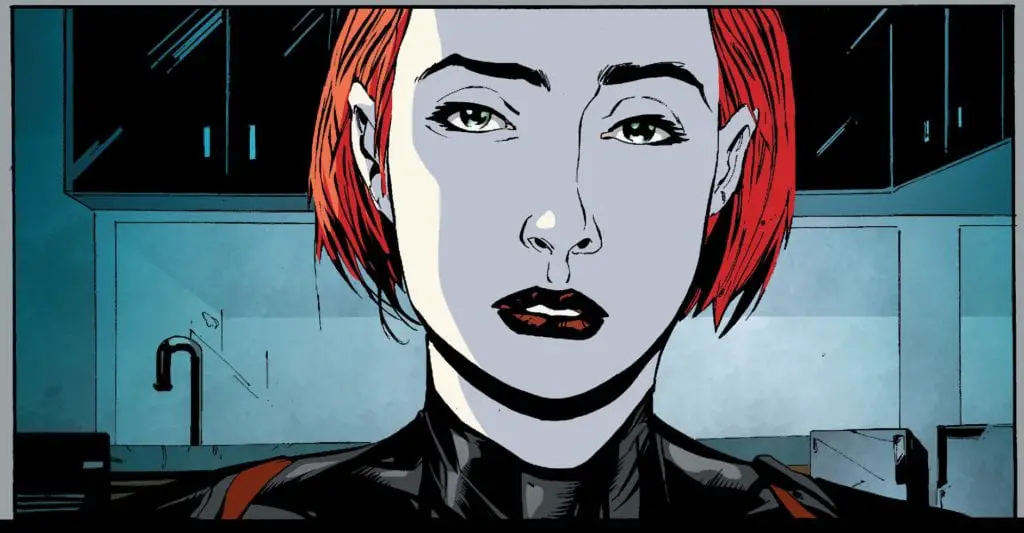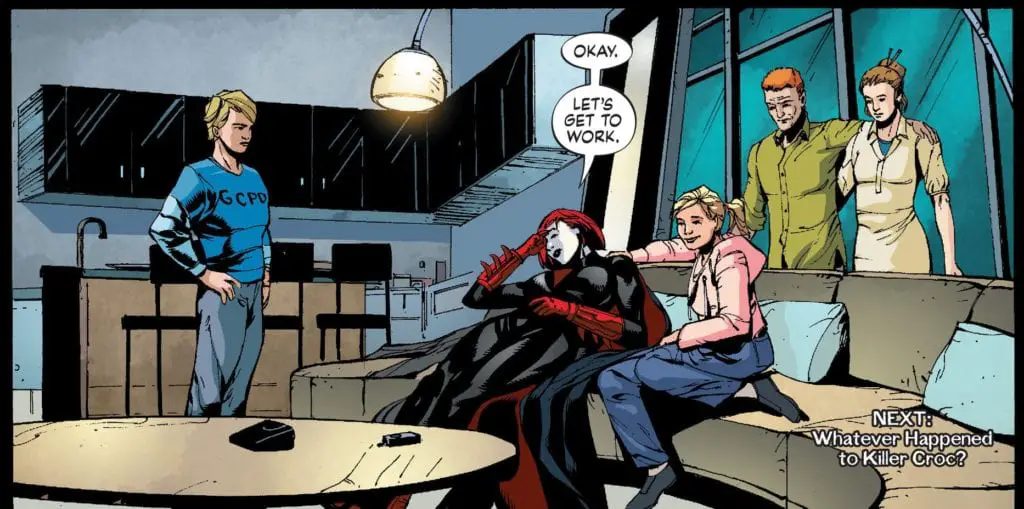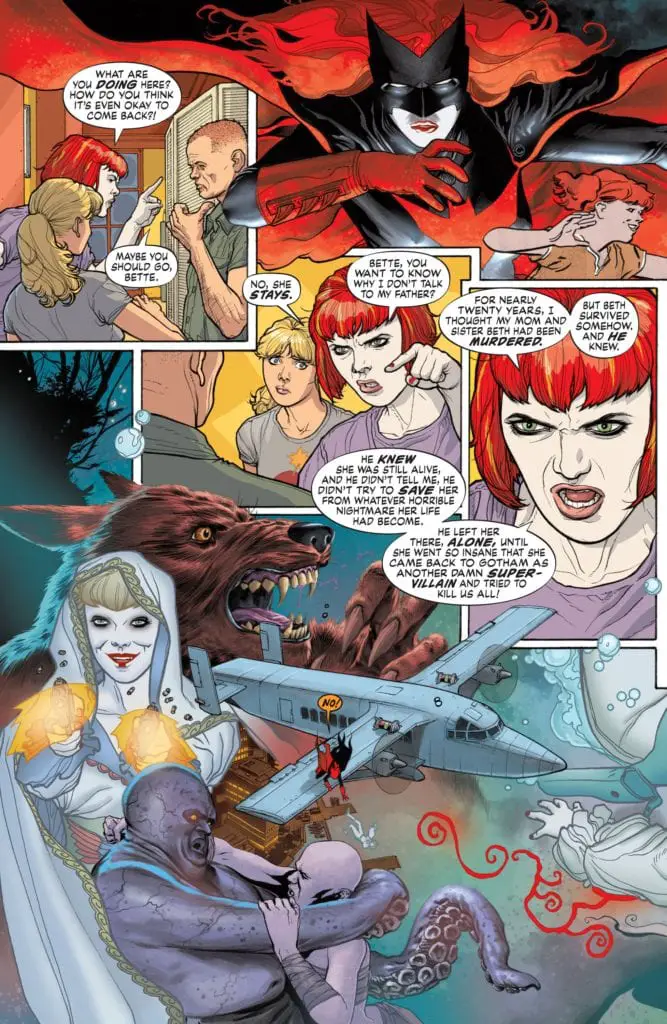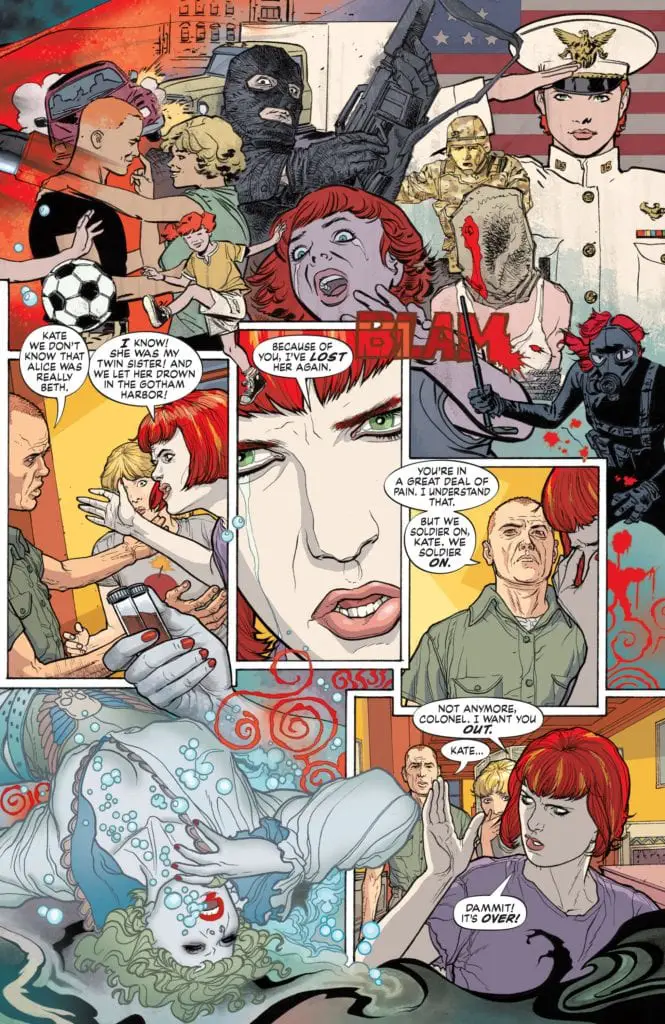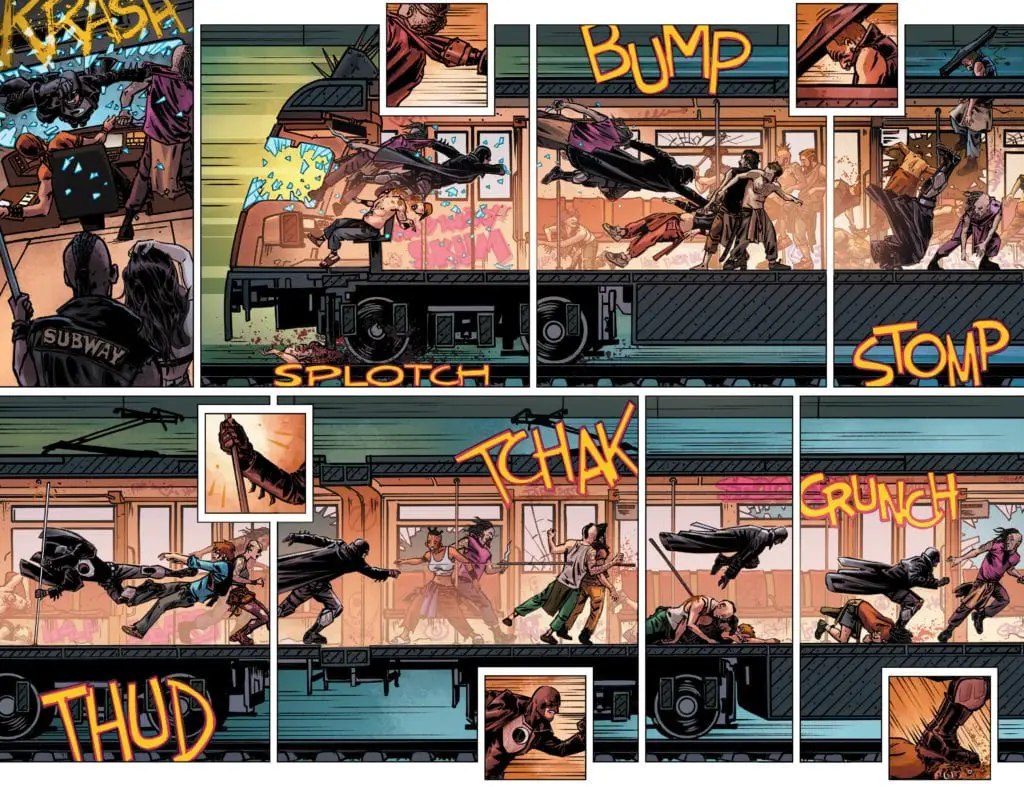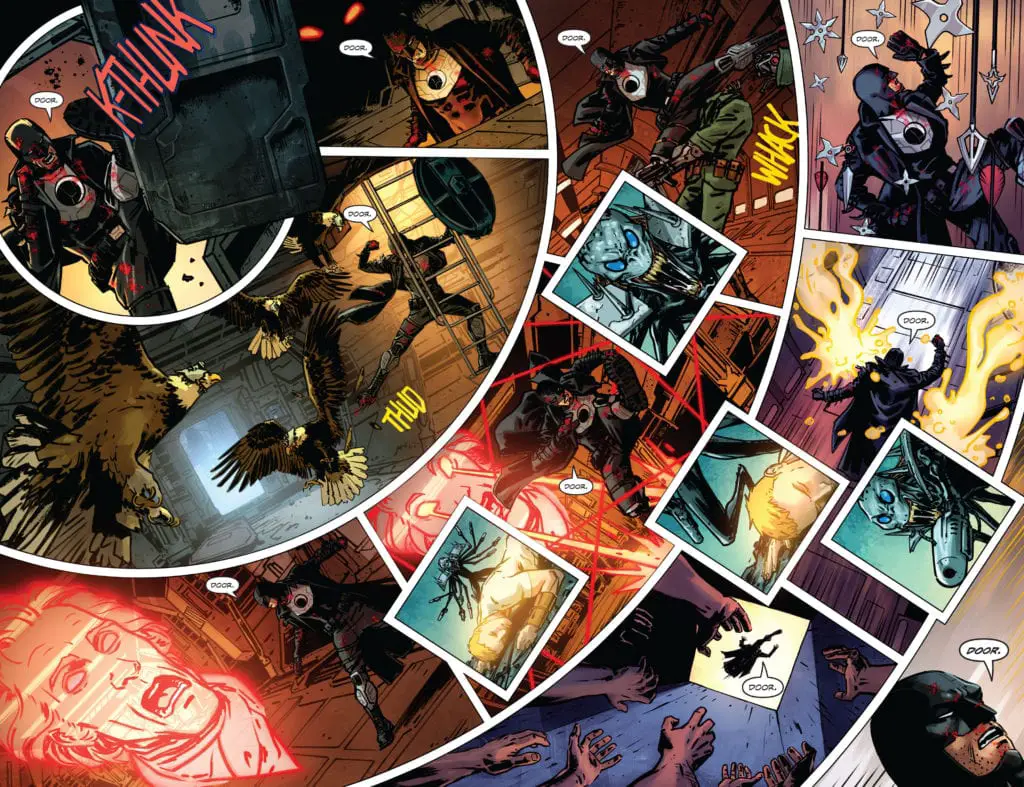
That’s not a bad thing, but it does mean that there’s always a risk when attempting to introduce her to new readers—how this was achieved in Tynion’s Detective Comics is an entirely different article altogether—let alone starting a new story arc. Her origin, her history, her personality and her driving motivations are not so easily summarized as one could with Superman or the vast majority of the DCU. This isn’t really about public consciousness or cultural touchstones, either: Kate is constantly toeing that line of specificity and over-complication.
That’s not to say that comics are inherently simple (lord knows they aren’t, sometimes by design) but that there is a certain nebulous line to stay on one side of, though that goes the same for all narratives. A Song Of Ice And Fire is “complicated”, but it’s never written in a way that punishes you for not being a genius or neglecting to have Martin’s notes scrawled in the margins. There’s a time and place for stories of that overwhelming complexity (Dune is a good example; I had to take notes), but rarely should that be the surface level. Remember, a regular issue of a monthly comic is twenty pages. Depending on the creative team, that can be a lot, too little, more than enough and everything in between.
For all of those reasons, when one goes about writing a Kate Kane story, a true Batwoman story, it’s important to consider what that explicitly means. What makes a story a Batwoman story? What makes this tale exclusively one about Kate Kane, rather than someone else? Where is that nebulous line, and how is the story you’re trying to tell going to be conveyed? It’s not an easy question to answer, as it is extremely context dependent.
There’s also one final, and possibly the largest, reason as to why it can be so difficult. Kate is constantly moving forward. She changes, and, for the most part, those changes stick. One one level that makes perfect sense: character develop over time. But with most of the DCU, the Batfamily in particular, that is typically an extremely slow and arduous process that more often than not gets reverted once a new creative team takes over.
Kate’s never been slow by any standard. At least, not during her time as Batwoman. Her original ongoing was more or less about realizing how stupid the “solo act” was, and that she needed to reconnect with the people that love and care about her. Miraculously, that actually stuck around to the point where it made Tynion’s run on Detective Comics possible. This is even addressed during the Batwoman Begins two-parter, with Simon-Sans-Garfunkel as the mouthpiece.
There’s one particular moment in Batwoman #20, my single favorite scene of Batwoman media to date, that brings all of this to a head and actually cements everything Kate has learned and pushed through over the course of the book so far, and yeah, it actually sticks. More or less.
[tw_gallery type=”gallery,slider” height=”200″]
[/tw_gallery]
With all that in mind, and with the first arc of Batwoman Rebirth now basically behind us (though I’ve no doubt that Batwoman #5 will give us far greater emotional context for all of it), I wanted to take a moment to consider whether or not The Many Arms of Death was a true Batwoman story. A Kate Kane story.
Except, I already basically did that and the answer is a resounding “yes”. Thing is, there is a not insignificant portion of the comics fandom that disagrees and sees this arc as rather “meh” or just plain boring outside of the art. Which is, in my opinion, the opposite of what actually happened here. But we’ll get to that in a minute.
These fans, and myself included to a degree, want the old relationships back in the book, the old supporting cast because they’ve grown fond of them during the Rucka/ Williams and subsequent Williams/Blackman runs. They brought something special to the book and all contributed to one another’s character in a very cohesive and palpable way. And that was done in such a way that Kate only had one interaction with her father before the scene above.
As for what that single conversation was, well, it was in Batwoman #1, and it finally brings us to why so many find Batwoman Rebirth so underwhelming so far:
[tw_gallery type=”gallery,slider” height=”200″]
[/tw_gallery]
That’s Kate’s entire relevant character history, sans the events of 52, up to late 2011 in one gorgeous double-page spread. Remember what I said about specificity? This is what I mean. Not that every artist should be J.H. Williams III, because they shouldn’t be, or that it’s necessary to implement three different art styles to further distinguish where one event begins and another ends, but rather that it’s the attention to detail is paramount.
The fault is not in Bennett’s scripting or Tynion’s co-plotting. Not even close. It’s Epting.
Don’t get me wrong, Epting is a fantastic artist. His lines are clean, and his more grounded yet smooth art style should, in theory, serve Kate very well. It works for Image Comics’s Velvet, which, again in theory, had a similar tone going for it, but not quit so in practice. His art is, on a purely technical level, again, excellent. It’s very clean, very polished. It just doesn’t work for this story, or this genre. The lack of specificity is pretty blatant.
It’s sort of like how the best set designers tell you everything about a character just by looking at their living space or desk, but without overwhelming you. That just wasn’t present here. Stuff in the background wasn’t seemingly relevant to the panel compositions, and that’s fine for some books…but not for Kate.
Epting simply wasn’t an ideal choice for the opening of this book, though he may have seemed it at first, due to his previous work. However, when it comes to the superhero genre, there’s not a lot of energy in his art, giving the entire book a sense of, well, low energy, despite the fast paced plot. And that’s really not what you want for an opening arc of a new book for a character that’s been given a miracle of a second chance.
Now, if you’re wondering who I think would be an ideal artist for Batwoman Rebirth, aside from J.H. Williams III since that’s not a fair pick, I’d have to say someone who relishes in specificity but has a nice amount of personal flair to twist it on. Someone like John Romita Jr (he’s got that Kirby-esque blocky thing going for him), Amy Reeder (anyone know what happened to her?), Alvaro Martinez (it’d have to be a tad rougher than his usual mind blowing style, but I’d be remiss not to mention him here) Trevor McCarthy (inky everything!), Jock (just oozes cool) or Fernando Blanco…the latter of which is actually going to be drawing Batwoman Rebirth starting at #7 so hey, that’s pretty awesome!
Again, the fault is not in the writing, but rather the execution of it via the art. While some believe that good writing can carry any story, I see this as an excellent example of how that simply isn’t true. Sure, it doesn’t need to be stellar art—one only needs to look at the original webcomic version of One Punch Man for proof of that. But it does need to fit the tone and style of the story being told.
All narratives, good and bad, old and new, are reliant upon the strength of their execution. This is a story about a rough emotional wound for Kate, and this island of lost souls that also serves as a dirty, gritty microcosm of the world as a whole. It’s a modernized Nassau, so things really shouldn’t be looking as immaculate as they do.
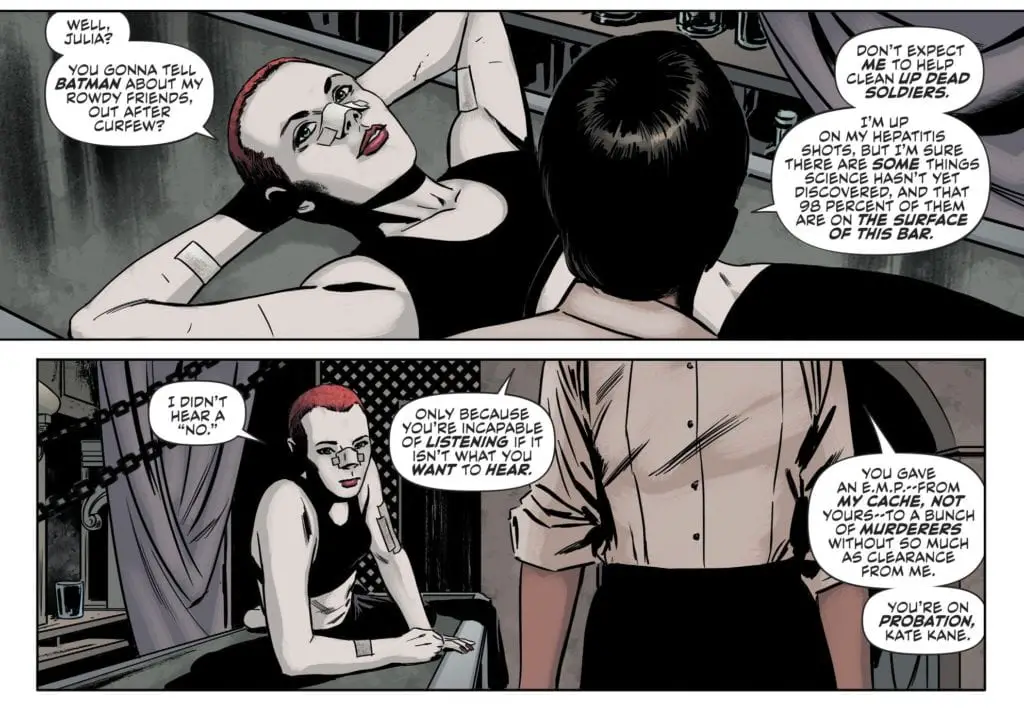
If you look at the dialogue in Batwoman Rebirth, the actual beat for beat events, and consider what those panel descriptions most likely were, it’s not hard to discern why some readers of Batwoman Rebirth find it underwhelming in its execution. The hooks are there, the specificity is present, she’s still pushing forward, but so very little of it is conveyed effectively, if at all, through the art.
Fact of the matter is, this book as heaps and tons of nuance and subtext but it’s inherently harder to “find” because of how, to be perfectly blunt, kind of sanitized Epting’s style is. The average reader won’t dig deeper into a story if the execution doesn’t draw them in, and that’s true for everything. But, at the same time, nuance and subtext isn’t the end all, be all. You can do a Batwoman story with very little, provided the text itself is executed effectively flawlessly.
On that note, it’s important to mention that for the first arc of the 2011 Batwoman series…there wasn’t a whole lot of subtext or nuance. That wasn’t because Williams and Blackman weren’t capable of that (they clearly were as we saw in later issues), but rather that Kate had yet to be fully fleshed out enough where such a thing would be viable. So they, same as every other great writer ever, including Bennett and Tynion, went Character over Plot. A ton of stuff happened, sure, but “Batwoman tracks a ghost and missing kids” was mostly set dressing for that opening arc, only taking up, at the most, 1/5th of the actual story. The rest is about Maggie, Bette, Jacob and Chase running around doing stuff. It was far more obvious at the time why this needed to be a Kate Kane story rather than a Batman story.
With Batwoman Rebirth, this isn’t as clear despite it being overwhelmingly true. The military industrial complex is very much a morally “ambiguous” and nebulous enemy that Kate must face—one that Bruce wouldn’t really be in a position to fight—but it doesn’t exactly lend itself towards building relationships with her new supporting cast. Kate herself shoulders the entirety of the narrative, as she should. It’s her name on the cover, and that shows just how much confidence, rightly so, that Bennett and Tynion have in her ability to carry the story that they know they can write. A story that is, frustratingly, kind of hindered by its opening artist. Of course, the general fandom will most likely never see the issues here as Epting’s, obviously unintentional, doing.
Unfortunately, due to a portion of the comics fandom not understanding the word satire, along with quite a few who hate Bennett because she’s either A.) a woman B.) queer or C.) all of the above and more, the blame for any failings in Batwoman Rebirth were automatically and preemptively shifted onto her. That’s just how this works these days, as shitty as that reality is.
But, ideally, these artist-based woes are all behind us now. Batwoman #5 will be drawn by Stephanie Hans, and apparently it’s, uh, this:
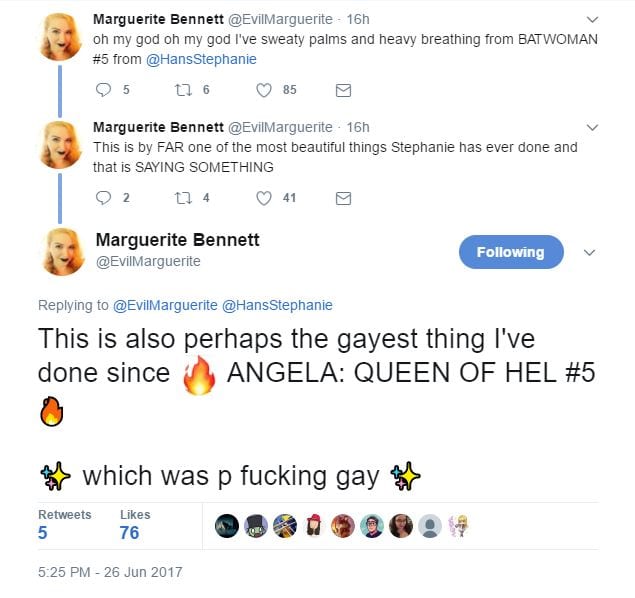
After that we’ve got a flash forward with Eddy Barrows for Batwoman #6, and then, just to reiterate, a new regular artist in Fernando Blanco, whose name you may recognize as the penciller of the phenomenal Midnighter and Apollo mini-series, as well as a few flashbacks and fight sequences during League of Shadows. And I personally cannot wait to see what he brings to the table, because if it’s anything at all like Midnighter and Apollo…
[tw_gallery type=”gallery,slider” height=”200″]
[/tw_gallery]
Looks kinda perfect, huh?


